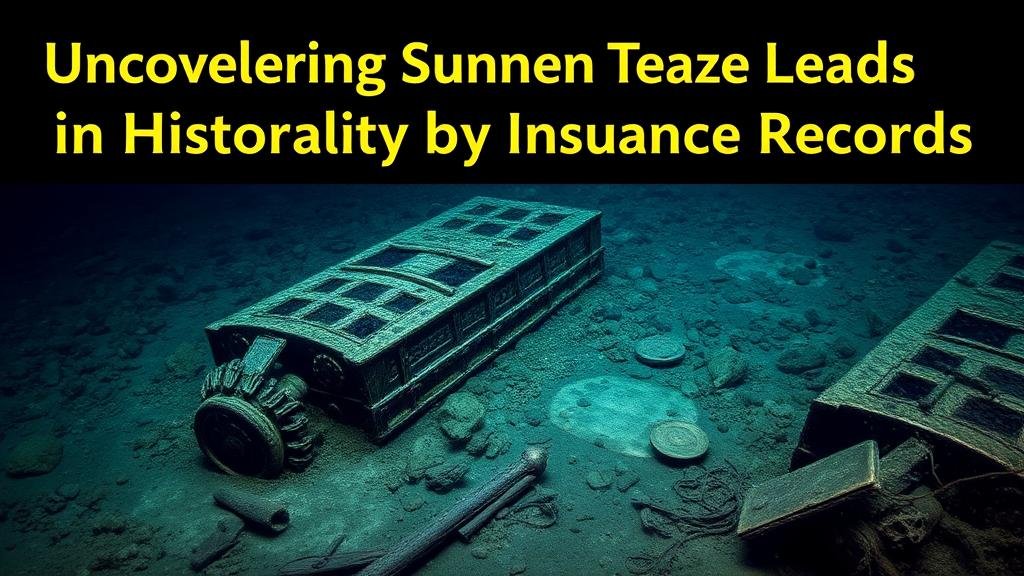Uncovering Sunken Treasure Leads in Historic Maritime Insurance Records
Uncovering Sunken Treasure Leads in Historic Maritime Insurance Records
The field of maritime archaeology continues to unveil new dimensions of our understanding of historical trade, shipwrecks, and the treasures lost at sea. One often-overlooked resource in this domain is historic maritime insurance records, which provide invaluable information not just about the insurance policies themselves, but also about the vessels, cargoes, and their fates. This article explores how these records can lead researchers and treasure hunters to sunken treasures, analyzing their historical context, relevant examples, and implications for contemporary maritime archaeology.
The Historical Context of Maritime Insurance
Maritime insurance has existed for centuries, with its roots dating back to the 13th century. By the late 17th century, formalized insurance markets were emerging, particularly in major trading hubs like London and Amsterdam. The significance of these records lies in their ability to document the voyages of merchant ships, including details about cargo, destinations, and any claims made after losses. For example, the Lloyd’s of London archives, established in 1688, house numerous records that illuminate the maritime landscape of the time.
Understanding Insurance Records
Maritime insurance records typically include:
- Policy documents, which detail the terms of coverage
- Claims records that list incidents, losses, and settlements
- Ship registers that outline the particulars of the vessel, including dimensions, tonnage, and ownership
One significant benefit of these records is their ability to identify patterns or trends in maritime trade, such as the prevalence of certain routes or the types of goods transported during specific periods. For example, insurance records from the 1700s demonstrate a notable increase in transatlantic trade, correlating with the peak of the mercantile economy and the subsequent shipping losses experienced during wars.
Case Studies in Uncovering Treasure
Several high-profile discoveries have utilized maritime insurance records to locate sunken treasures. A prominent example includes the wreck of the Spanish galleon Nuestra Señora de Atocha, which sank off the Florida Keys in 1622. Research conducted on insurance documents revealed crucial details about its cargo, which included gold and silver. When treasure hunter Mel Fisher discovered the wreck in 1985, he unearthed $450 million worth of treasure.
Likewise, the wreck of the SS Central America, which sank in 1857, was located due in part to maritime insurance records that documented its cargo of gold, heading to San Francisco during the Gold Rush. The recovery operation, initiated by a team led by Tommy Thompson in the 1980s, yielded over $100 million in gold coins, ingots, and other precious artifacts.
Modern Applications of Historic Records
Today, maritime insurance records are not only a resource for treasure hunters but also for historians, economists, and environmental scientists. Researchers can use them to understand trade patterns, economic impacts of maritime disasters, and even shifts in maritime technology over time. Plus, the advent of digital archival techniques has made it easier to access these records, thus broadening the scope for interdisciplinary research.
Challenges and Considerations
While the benefits of maritime insurance records are substantial, researchers face certain challenges. Notably, the preservation of records can vary significantly based on the time period and location. Natural disasters, wars, and archival management failures have led to the loss or degradation of many important documents. Also, interpreting these records can require a nuanced understanding of maritime law and trade practices, which may not always be accessible to amateur treasure hunters.
Also, ethical considerations regarding the recovery of artifacts from shipwrecks must be addressed. The balance between archaeological research, heritage conservation, and commercial treasure hunting continues to spark debate among stakeholders.
Conclusion
Historic maritime insurance records offer a treasure trove of information for those interested in uncovering sunken treasures. By combining archival research with archaeological practices, we can deepen our understanding of maritime history while also uncovering significant artifacts that shed light on past cultures and economies. As this field of study evolves, it calls for an interdisciplinary approach that respects both history and ethical considerations in treasure recovery.
Actionable Takeaways
- Explore archives such as Lloyd’s of London or local maritime museums for historical insurance records.
- Consider the ethical implications of treasure hunting and engage in responsible archaeology.
- Use modern technology and techniques for archiving and analyzing maritime records.
- Collaborate with multidisciplinary teams, including historians, archaeologists, and legal experts, to enhance research outcomes.



